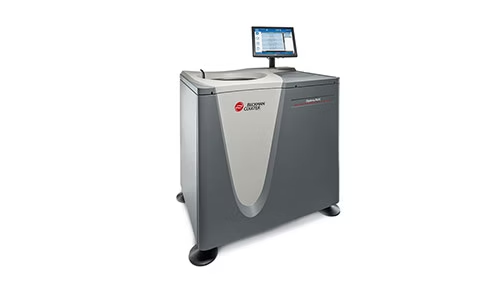Plasmid Development and Manufacturing for AAV vectors

Plasmid Development and Manufacturing for AAV vectors
Why It Matters
Adeno-associated Virus Particles for Cell and Gene Therapies
Cell and Gene therapies have emerged as promising therapeutic modalities, particularly for treating patients with genetic and rare diseases. These innovative therapies have the potential to transform healthcare. Adeno-associated viruses (AAVs) are vectors that play a critical role in delivering genes for developing these life-saving and transformative therapies. AAV-mediated gene therapies have been introduced to the market and are considered safe, efficient, and highly specific in targeting cells, making them an ideal choice for delivering genetic materials to the target cells, tissues, or organs in the body.
Select the Right Tools and Partner
Developing and manufacturing AAVs is quite complex and requires many iterative steps. Success begins with plasmid development, which significantly impacts downstream processes. Cell and Gene therapy developers face unique challenges tied to AAV capsid biology or desired in vivo behavior.
The Life Sciences companies of Danaher Corporation are dedicated to supporting cell and gene therapy developers to enhance plasmid development and manufacturing processes for AAV vectors. Our companies understand the critical need for technologies that can overcome bottlenecks swiftly and efficiently. They offer a range of comprehensive instruments, software, and services to address these needs.
The Process
One lab, three paths to faster outcomes
End to end workflow solutions
Leverage the extensive portfolios of our Life Sciences companies and accelerate the Development and Manufacturing of pDNA for AAVs
Product Spotlight
Optima™ AUC
This latest tool is the most robust technology for providing data used to determine protein molecular weight in basic protein research and quantification of aggregation levels for academic and biopharma research.

FAQs
What are Adeno-associated virus (AAV) particles?
Adeno-associated viruses (AAVs) are tiny, non-enveloped, single-stranded DNA viruses belonging to the genus Dependoparvovirus that can infect a wide range of vertebrate hosts, including humans. AAVs are replication-defective and dependent on helper viruses, such as adenoviruses.
How do AAV particles work in gene therapy?
AAV particles function in gene therapy via the following:
- Recombinant AAVs (rAAVs) have their payload replaced with therapeutic genes under the control of a promoter that regulates its expression in the target cells.
- The rAAVs are then delivered to the target tissue via optimized routes.
- rAAVs interact with specific receptors on the surface of cells, which triggers endocytosis.
- rAAV particles are initially trapped within the endosome but can escape and release their genetic payload.
- The genetic payload can then integrate with the host cell's genome at a specific site or remain episomal as circular DNA molecules within the nucleus.
What are the advantages of using AAV particles in gene therapy?
The advantages of using AAV particles in gene therapy are:
- AAVs have a well-characterized safety profile in humans.
- AAVs exhibit a reduced risk of rejection or complications.
- AAVs can infect a wide range of cell types, which makes them useful for delivering genes to various tissues.
- Unlike some other viral vectors, AAVs can integrate their genetic material into the host cell's genome at a specific site, or remain episomal. This allows for sustained gene expression without permanently altering the host cell's DNA.
What types of diseases can be treated using AAV gene therapy?
AAVs are being studied as vectors for gene therapy in a variety of diseases arising out of genetic disorders, including:
- Ophthalmic Diseases like Leber Congenital Amaurosis.
- Blood Diseases like Hemophilia.
- Muscle diseases like Duchenne Muscular Dystrophy.
- Disease in the lungs and digestive system like Cystic Fibrosis.
- Neurological disorders like Spinal Muscular Atrophy and Parkinson's disease.
- Cardiovascular Diseases like Atherosclerosis.
- Cancers like glioblastoma.
What are the safety concerns of AAV gene therapy?
The safety concerns of AAV gene therapy include:
- Some individuals may have pre-existing immunity to AAV due to previous exposure to these viruses. This could potentially affect the effectiveness of gene therapy using AAV vectors.
- In some cases, the body's immune system may mount an inflammatory response against the AAV vector itself, even in individuals without pre-existing immunity, reducing the effectiveness of gene therapy.
- Despite their specificity, in rare cases, AAVs can trigger Insertional Mutagenesis through random integration into the host genome, disrupting essential genes and potentially leading to tumor formation.
- Determining the optimal dose of AAV vectors is crucial. A very high dose could increase the risk of immune response or insertional mutagenesis, while a very low dose might not deliver enough therapeutic genes for efficacy.
- AAV gene therapy is a relatively new approach and investigation is ongoing to fully understand the potential for delayed side effects.








